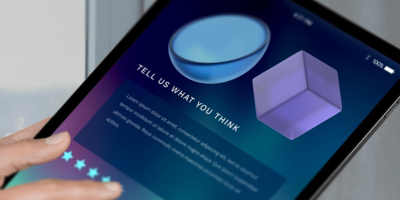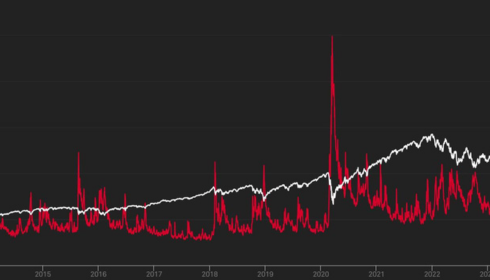
Reviews of employee performance can be sensitive topics. They often bring to light impractical and misaligned evaluations that employees feel frustrated over, sometimes yearning to be recognized fairly. So, how can we improve equitability in the review process? With the Controlio app, we have data-driven methods that transform the performance evaluation process by minimizing biases while fostering fairness. Having spent substantial time both reviewing and being reviewed, I understand the shift data-powered insights bring from vague to precise action items. Let us explore the reasoning behind data-driven reviews, their importance, and their role in building inclusive workplaces.
Which one of your employees is your favorite?
You would frequently hear employees joke around saying that two of their co-workers have been showing up to work for no real reason while always getting praised by management as if they were incredible. This vivid example captures the framework around traditional employee evaluations very clearly. Employees would simply participate in these evaluations by judging their peers and co-workers, and as all of us know, the results were often biased and unprofessional.
The last two decades have seen tangible improvements in workplace policies aimed at correctly enforcing rewards and praise for appropriate employees, the so-called performance evaluations. However, in a vast majority of companies, these policies still rely and depend solely on gut feelings and absentminded recollections of supervisors who are supposedly in charge of managing their human capital. I personally experienced such a feedback loop where my “energetic” performance received feedback without any logic to substantiate it.
Bias can manifest as the halo effect, where recognition of a single positive attribute blinds someone to all of a person’s shortcomings, or in proximity bias, where in-office employees are rated higher than remote workers. Such inconsistencies disrupt trust and demoralize employees. Reviews that aim to eliminate bias by personal impressions still use feedback as a basis free from subjective sentiment.
In What Ways Data Reduces Review Bias
Data-centered reviews shift focus onto objective proof of work, such as completed projects, generated sales, and tasks performed. Utilizing monitoring software for employees like the Controlio app streamlines tracking of real-time performance metrics, presenting a verifiable picture of a person’s contribution within the organization. At my previous organization, project milestones were tracked via similar software. During review conversations, my manager tended to point at deliverables met, making discussions far more pleasant and constructive.
Andy Przystanski of Lattice makes a similar argument, as he points out that visualization tools help managers assess employee performance more objectively. With data on hand, managers can evaluate many aspects of employee productivity—meeting deadlines, collaboration, and other work habits. Without self-imposed biases, every employee can expect fair evaluation irrespective of how appealing and charming he or she is.
How Data Is Empowering Remote Teams
Without in-person meetings, assessing remote employees has become a challenge. Most remote workers feel disregarded. I worked remotely for a year and worried my efforts weren’t being recognized. That changed when my team adopted data-driven tools like the Controlio app. With the Controlio app, my manager was able to evaluate my communication patterns and task completion. This data was helpful during reviews, and most importantly, it automated my accountability.
For remote teams, data feedback ensures fairness. Balanced assessments based on response times or activity logs are blind to the employee’s location. This mitigates proximity bias and enables appreciation for the commitment made from afar.
Efficiency and Enhanced Understanding
Let’s face it—review periods are the worst. Employees view them as vague, time-consuming rituals, while managers view them as a burdensome obligation. Using data shifts the focus back toward results. Rather than forcing recounting of events or sifting through vague memories, reporting can now highlight strengths and recommend growth areas using preset criteria. I recall a previous role where my manager reported that I was spending an unreasonable amount of time on certain lower-tier tasks. While that feedback could sting, it actually improved my productivity when presented with reassessment strategies.
These tools make feedback clearer for employees as well. Rather than receiving vague comments such as “Be more proactive,” employees are provided with specific and quantifiable objectives. Unambiguous feedback helps improve performance while reducing the stress associated with trying to decipher what the manager meant.
Nurturing a Trusting Workplace Environment
Trust can be built using data-driven performance reviews, but that is not their only focus. Fairly evaluating and rewarding work increases employee engagement and retention. However, it is important to exercise caution when using data. Trust can be lost if employees feel they are being micromanaged and subjected to meaningless number-based scrutiny. It is critical for managers to use active listening and pair the data with genuine open dialogue rather than steamrolling with closed decisions based on the figures presented. In my experience, the best reviews combined data with a genuine discussion about my goals and challenges.
Data should always be paired with context. Trust explanations, such as what is being tracked and why it is relevant, will motivate employees when performance reviews occur. This ensures that workers do not perceive it as a trap.
Final Note: Toward Equity
Reviews that are backed by data and conducted with the use of the Controlio app are beneficial for achieving equity in the workplace. Such reviews offer remote workers the opportunity to demonstrate their skills, save time, and fight against inequality in the workplace—winning for everyone. It’s not simply data-driven; it is trust-building and growth-fostering. What do you think data can do for your workplace? I would like to know.








